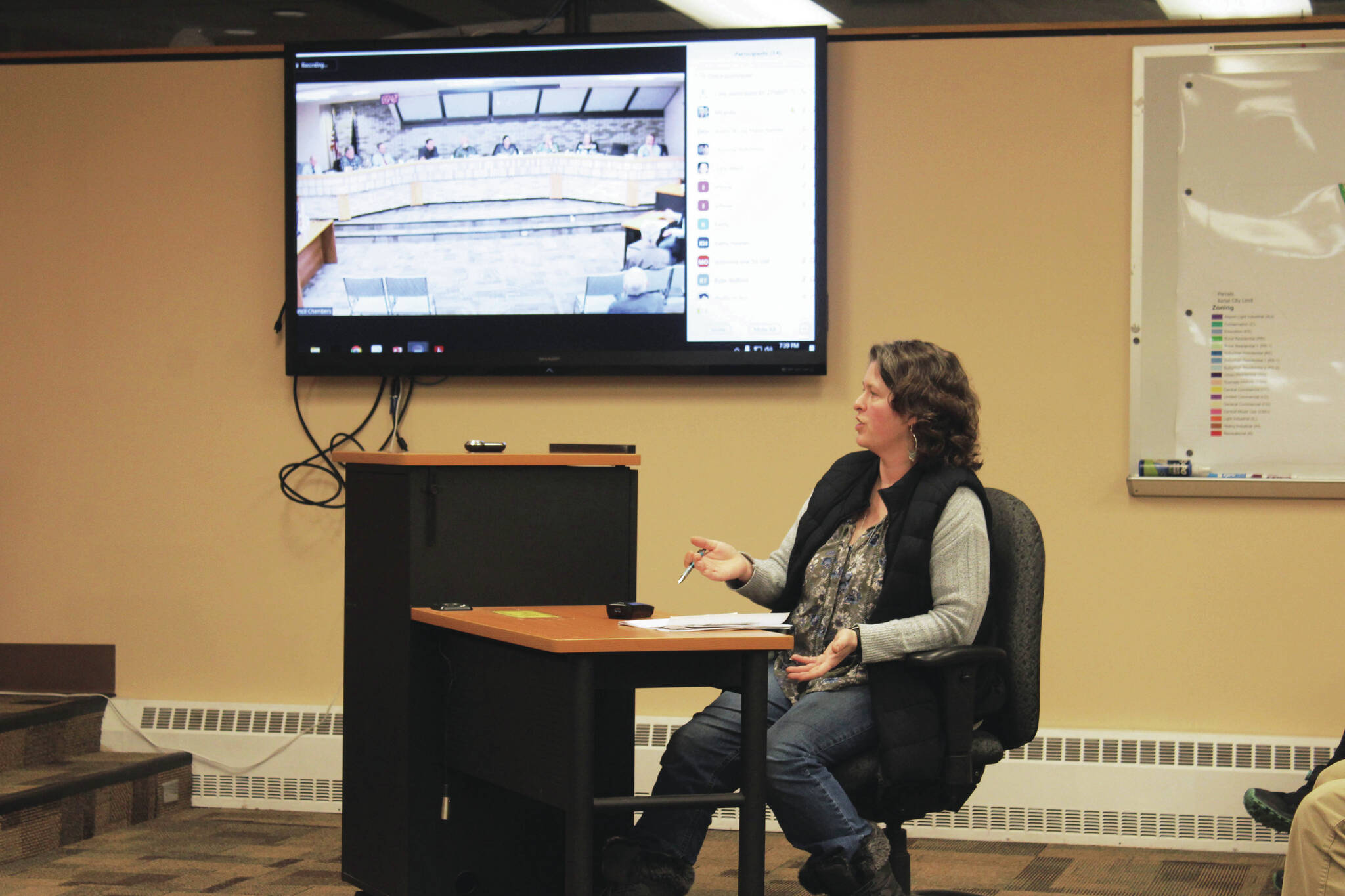Roughly two months after a meeting of the Kenai City Council was disrupted by a hacker who attended and disrupted one of their meetings via Zoom, the city is, for the fourth time, weighing the pros and cons of allowing people to participate in city meetings remotely.
Council members took no action during their regular meeting on Wednesday but discussed the future of remote participation with the city clerk, who runs council meetings. Those who support allowing remote participation say it increases opportunities for people to be part of the public process, while those opposed point to low use of the service.
Data prepared by Kenai Clerk Shellie Saner show that 156 people participated in city meetings remotely over the last year. Kenai offers remote participation for city council and planning and zoning meetings, but also for parks and recreation, harbor commission, beautification committee and airport commissions.
The same data show that the most remote participation happens during city council and planning and zoning meetings, but that those two groups have more meetings generally than other city commissions. The meetings during which city council members discussed hot-button issues, such as an ordinance that allowed more residents to own chickens, saw the highest public participation.
The Kenai City Council has, since mid-2021, debated at least three times whether it should discontinue its Zoom subscription, each time opting to continue offering the service. The city began allowing remote participation in meetings during the COVID-19 pandemic.
Kenai Vice Mayor Henry Knackstedt said allowing remote participation via Zoom is a “distraction” to the mayor and to council members and said the most powerful testimony the council gets is from people who attend meetings in person. Knackstedt said he supports allowing members of the body that is meeting, such as council or commission members, to continue to participate remotely.
“That kind of limits the public use there, but we do have YouTube,” Knackstedt said. “Most of them — it appears they’re just watching anyway … and a very good way to do that is through YouTube.”
Mayor Brian Gabriel asked if it would be possible to allow remote meeting participation for “interested parties,” or people that the council specifically wanted to hear from on specific issues. Saner said that practice wouldn’t offer constituents equal opportunity to address the city council.
“I wouldn’t recommend (it),” Saner said. “Because then we are not offering the same opportunity for the public. It’s one of those all or nothing, because we need to be fair with all of our constituents … We could be disenfranchising another person that wanted to comment on the same thing, but they couldn’t get here.”
Council member Phil Daniel said he was surprised to see that remote participation in city meetings was so low, but that allowing the opportunity is important. The city should make available as many opportunities as possible for residents to participate in city business, he said, calling it “short-sighted” to take the tool away.
“Being a body here we are open to the public, and some people may not want to make the journey,” he said. “As you can see, the hot-button items are the ones that people will participate in. They may live here, they may be snowbirds, we don’t know, and I feel like it’d be a disservice of us as a council to take that opportunity away for people that may not be able to come in and give their testimony.”
Council members further expressed their wariness about potential repeats of a “Zoom-bomb” incident that occurred during their Oct. 19 meeting. Zoom-bombing refers to unwanted disruptions of Zoom meetings, such as by hackers, as a method of harassment. After Zoom attendees interrupted the Oct. 19 council meeting with disruptive comments, the city terminated the call and briefly adjourned the meeting.
Saner told council members that, since Oct. 19, she has upgraded the city’s Zoom subscription to a webinar version that makes it “much more difficult” for Zoom-bomb incidents to occur. The city pays about $3,000 annually, she said, for the upgraded service.
Anyone who gives testimony during a public meeting, though, might say something inappropriate, she said, and it is the role of the council — rather than of the clerk — to decide when to intervene.
“The webinars prevents our meetings being taken over,” she said. “I’m not going to guarantee that — there are some really good hackers out there — but with the webinars, it does prevent what happened, for the most part, at our last meeting and we’ll have a little more functionality to stop it.”
Gabriel said it’s his impression that the council is interested in continuing to allow remote participation in city council and planning and zoning meetings, but not for board and commission meetings. Saner will bring back a policy proposal for council consideration at a future meeting.
Wednesday’s Kenai City Council meeting can be streamed on the city’s YouTube channel.
Reach reporter Ashlyn O’Hara at ashlyn.ohara@peninsulaclarion.com.

